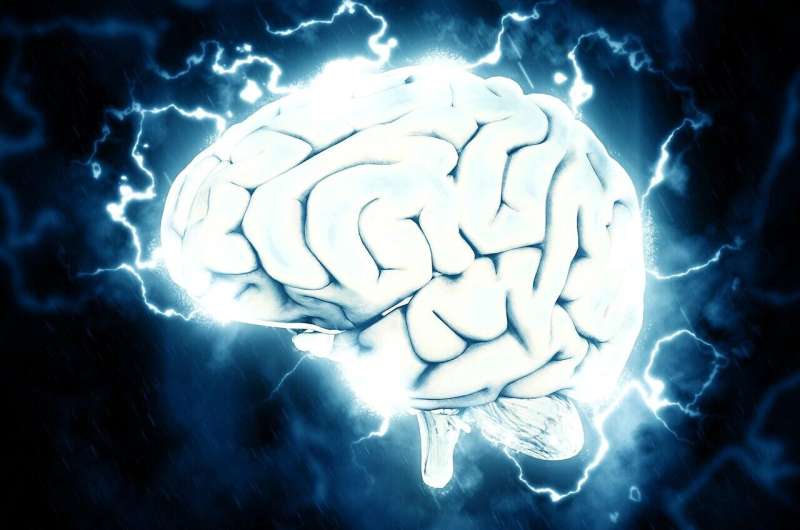A new theory of brain organization takes aim at the mystery of consciousness

Consciousness is one of the brain's most enigmatic mysteries. A new theory inspired by thermodynamics takes a high-level perspective of how neural networks in the brain transiently organize to give rise to memories, thought and consciousness.
The key to awareness is the ebb and flow of energy: When neurons functionally tag together to support information processing, their activity patterns synchronize like ocean waves. This process is inherently guided by thermodynamic principles, which, like an invisible hand, promote neural connections that favor conscious awareness. Disruptions in this process break down communication between neural networks, giving rise to neurological disorders such as epilepsy, autism or schizophrenia.
By using thermodynamic principles such as energy gradients, dissipation and approach to equilibrium, researchers have a way to characterize how neural phenomena happen and how they sometimes deviate toward neuropathological states, said study author Dr. Jose L. Perez Velazquez affiliated with the Ronin Institute in Montclair, NJ.
The results, funded by Novela Neurotech, were published in the open-access journal Frontiers in Neuroscience.
Energy States as a Guiding Principle
Scientists have long hypothesized that consciousness arises from the coordinated activity among neurons widely spread across the brain. One framework, the Global Workspace Theory, posits that some brain regions integrate information over space and time across a large number of connected brain areas, resulting in data that is globally available for diverse processes such as memory, attention and language. Another hypothesis, the Integrated Information Theory, holds that consciousness is the result of a heavily interconnected brain, the degree of which can be quantified.
Despite decades of work, these theories don't directly tackle the harder question: What are the principles guiding these connections such that consciousness arises in the brain? As increasing effort focuses on communicating with locked-in patients and determining consciousness in intelligent machines, the pursuit of biological principles guiding brain organization becomes increasingly crucial.
The new work combines classical physics, particularly some laws of thermodynamics, with modern recordings of neural activity to paint a general framework of how changes in free energy—the amount of energy available inside a system—temporarily synchronizes the activity in neural networks.
During conscious states, the brain actively integrates and segregates sensory information and so consumes more energy than when unconscious. Using available neural recordings from human participants during wakefulness, sleep, coma and seizures—each considered a brain "macrostate"—the team found that entropy during consciousness was higher than that during unconscious states. As a concept, entropy can be interpreted and measured in specific ways. Here, entropy is associated with the number of configurations of synchronized, or "connected," brain networks.
"Energy is dissipated as more neurons become connected," write Perez Velazquez and colleagues. Models using thermodynamic equations show that healthy and conscious states have a tendency toward greater dissipation.
However, it is not just about how much free energy is in the brain. Each macrostate is composed of multiple configurable microstates. During conscious awareness, the brain has an optimal number of connected neural networks, and so many more microstates to support cognition. In contrast, during unconscious states like seizures, there are too many connected neural networks resulting in fewer microstates—and so lower entropy and higher free energy, causing the brain to malfunction.
"To maintain healthy brain states, then, is not about the total amount of energy in the brain [...] but rather in how the energy is organized," say the authors.
A General Principle of Brain Organization
Together, viewing brain organization through the lens energy gradients and dissipation combines into a theory—or tentatively, a "principle"—that can separate healthy, conscious brain states from unconscious ones. The team thus believes that their approach can be used to further elucidate what happens when consciousness breaks, for example, in certain epileptic seizures.
Using the principle, the team offered an interpretation about how normal brain activity can transition into abnormal states. When neurons hyperactivate, it results in higher than normal synchrony that either lasts too long or reaches overly wide regions of the brain. In other words, the brain settles on a state that is too stable. This idea agrees with a previous interpretation of consciousness, detailed in the Brain-Behavior Continuum.
As a result, the brain has lower entropy and so reduced ability to form variable brain activity patterns. That is, it has fewer microstates, resulting in fewer configurations of interacting neural networks, which deprives the brain of its usual ability to quickly and flexibly adapt to the outside world. In some cases, consciousness also crumbles.
The team has now laid out experiments to test the theory. Dr. Diego M. Mateos at the Instituto de Matemática Aplicada del Litoral-CONICET-UNL in Santa Fe, Argentina, and Dr. Ramon Guevara Erra at the Laboratoire Psychologie de la Perception CNRS in Paris, France also contributed to the work.
More information: Jose L. Perez Velazquez et al, On a Simple General Principle of Brain Organization, Frontiers in Neuroscience (2019). DOI: 10.3389/fnins.2019.01106


















